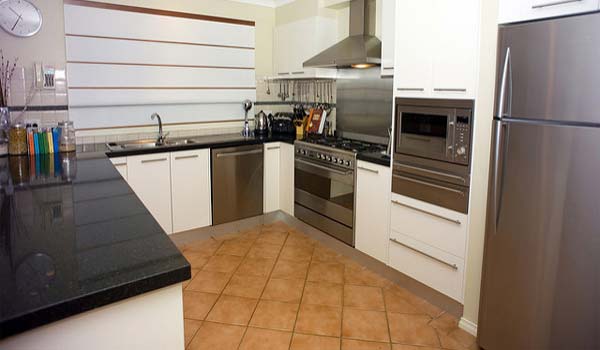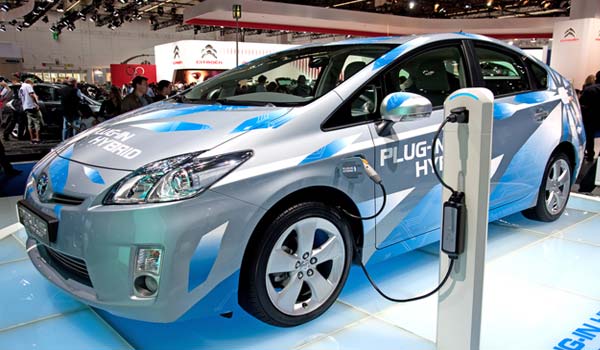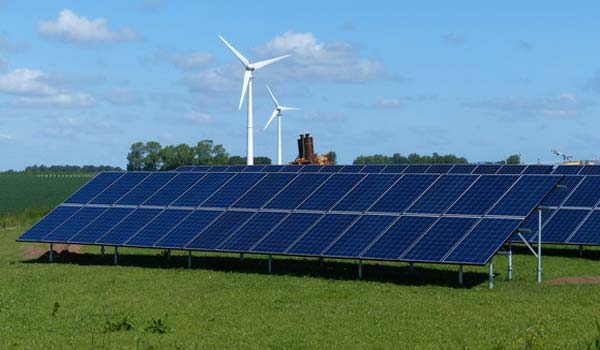Green Future Innovations:
There are some tech-sceptics out there that worry about the increasing presence of technology in our lives. However, technology may be the saviour that the planet needs most. So many advances have been made in technology in the past ten years alone that make it more energy efficient and easy to use. These developments make the gadgets more desireable, but they have the additional benefit of being better for the environment. You only have to look at some of the ways technology has improved everyday gadgets and appliances to make them greener. Could technology hold the key to the planet’s future?
Kitchen appliances:
Whenever someone decides to make small improvements to their kitchen, they tend to keep the same refrigerators, washing machines, and dishwashers until they break down. Perhaps because it always looks like it’s working just fine so it’s deemed an unnecessary expense. But refrigerator technology has made dramatic strides since the 1970s. Modern appliances are more energy efficient than their predecessors, so you’re wasting more money by not buying a new fridge. Yes, these big eco-friendly appliances may seem expensive initially, but it is estimated that you will use a significantly less amount of energy with a green appliance than you will with its counterpart. Over the course of time, you will save far more in energy and water bills than what you invested in the new appliance.

Eco-friendly appliances for your kitchen can range from a recycling system that composts everything, including meat and dairy, and leaves your kitchen smelling fresh; refrigerators that exceed government energy efficiency standards by at least 10 percent; water-saving dishwashers, and halogen light electric ovens that cook four times as fast as conventional ovens.
Hybrid cars:
We might never get over our dependence on cars; they’re the most convenient way of getting around, especially for people who have to commute to work or shepherd their families all over town. Therefore the manufacturers have been trying to find ways to make them less dependent on the finite source of fossil fuels. Years of hard work and research has resulted in a series of hybrid cars that are now sold at most car dealers, and are slowly becoming more common. Hybrid cars work using a conventional engine that uses petrol or diesel, and an electric motor; the electric engine powers the car at lower speeds and gas engine powers it at higher speeds. They are also built from lighter materials, are usually exempt from congestion charges, and have better gas mileage. A hybrid car like Toyota Prius and Civic Hybrid not only conserves fuel but also produce less CO2 emissions, making it a hero to the planet and the driver’s bank balance. Despite this, only a small percentage of drivers are driving hybrid cars.

Even though hybrid cars have many advantages, there are some significant disadvantages that convince drivers to buy conventional cars, or switch to public transport. Hybrid cars are comparatively expensive than a regular petrol car, and the potential future savings don’t normally win against a huge up front cost. The presence of dual engine, continuous improvement in technology, and higher maintenance cost can make it difficult for mechanics to repair the car, if you can even find one with the necessary skills to do the repairs in the first place. Furthermore, hybrid cars aren’t as powerful as conventional cars, because the petrol engine is much smaller as compared to what you get in single engine powered car. Even when it’s combined with the electric engine it is still significantly less powerful, so it’s not suited for city driving. Hybrid cars and electrical vehicles in general still have a long way to go, and a lot of obstacles to overcome before they become truly mainstream.
Renewable energy:
Currently, we are dependent on oil, coal, and natural gas for our energy, which will eventually run out. However, once we develop a renewable and sustainable energy so our energy sources are truly infinite. So far, renewable energy can be seen in the form of solar panels on the roof of some homes, wind turbine farms, or hydroelectric power. As well as being more environmentally responsible sources of energy, the renewable energy facilities generally require less maintenance than traditional generators. Their fuel being derived from natural and available resources reduces the costs of operation. Even more importantly, renewable energy produces little or no waste products such as carbon dioxide or other chemical pollutants, so has minimal impact on the environment. People who have solar panels on their roof can generate as much energy as they need, and they can even save money on their electricity bills.

However, there are still some disadvantages to renewable energy. It is difficult to generate the quantities of electricity that are as large as those produced by traditional fossil fuel generators, which may mean that we need to reduce the amount of energy we use or simply build more energy facilities. Many people are making an effort to reduce their energy consumption at home in order to save money on their bills, so this obstacle might not be so difficult to overcome. But reliability of supply is another problem that needs to be solved. Renewable energy often relies on the weather for its source of power. Hydro generators need rain to fill dams to supply flowing water. Wind turbines need wind to turn the blades, and solar collectors need clear skies and sunshine to collect heat and make electricity. When these resources are unavailable so is the capacity to make energy from them. This can be unpredictable and inconsistent. If this problem can be solved, clean energy might soon be available for everyone.
3D printing:

Some believe that 3D printing can revolutionize the ecological impacts of manufacturing; it’s believed that it will reduce waste and eliminate shipping. So far, neither one of these claims has proved to be true, because even though parts aren’t being cut out of bigger sheets of material, an inkjet 3D printer usually ends up wasting 40% of its material, which can’t be recycled. Even if waste wasn’t an issue, there is also a problem with energy usage; keeping plastic melted takes a lot of electricity, and for a design shop that keeps 3-D printers running throughout the day, each piece printed out has a big carbon footprint. However, it is possible that a switch in materials could solve the energy challenge. At the University of California in Berkeley, a professor was able to use a sawdust and adhesive mixture to create a product instead of plastic, which significantly reduced the amount of energy the machine used. Designer Enrico Dini and his prototype D-shape printer have essentially used 3D printing to manufacture an entire sculpture made of stone, and has hopes of using this process to print a full-sized stone building. Changing the material from plastic to something more renewable could give 3D printing a push in the right direction.
Foot energy:

Most people looking to reduce their carbon footprint decide to walk wherever they can; someone has finally realised that walking can be harnessed into a different form of energy. POWERleap is a floor tiling system that converts wasted energy from human foot traffic into electricity. First showcased in 2007 as part of Metropolis magazine’s Next Generation design competition, there is a lot of potential for this invention. The floor tiles are made from durable concrete and recycled glass, and then fitted with piezoelectric brass-reinforced ceramic plates covered in nickel electrodes. Each time a foot makes contact with the tiles, a metal pointer inside the tile compresses the ceramic plate, generating an electric impulse. In the prototype, the electricity activated four LED lights, which were visible through the glass surface. The idea was that these tiles would be used as a flooring system for high-traffic areas such as sidewalks, night clubs, or even public-transport platforms.
Green air:

We all love traveling, but airplanes are some of the largest consumers of petrol. There is plenty of advice available for those looking to cut their carbon footprint in their air – take the train or drive if you’re traveling a relatively short distance – but this isn’t helpful if you’re hoping to explore the other side of the world. Instead, there has been research into using hydrogen and oxygen to make air travel a sustainable activity. Plane manufacturing company, Boeing, is currently the pioneer in this research, and its prototype hydrogen powered plane carried out a successful test flight in 2009. While more research is conducted into hydrogen planes, manufacturers still find ways to reduce the carbon footprint of their flights. Boeing’s 787 is to built from carbon fibre, which means that it is lighter and will use 20 per cent less fuel than similar airliners. Unfortunately, even with recent advances in green technology, the air industry is still one of the worst and most avoidable polluters of the environment, and the sector is growing much faster than green technology can mitigate its impact.